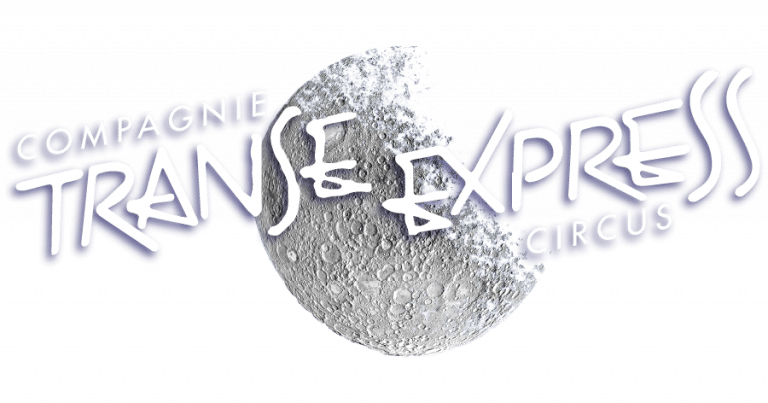ADN – When Costumes Reach New Heights
CREATION 2025
A show, fourteen performers, a textile challenge. Step behind the scenes of a suspended textile creation
In ADN – Odyssée Verticale, bodies dance, perform, and soar over 40 meters above ground. Here, the costume is not merely a visual accessory: it becomes a tool for movement, safety, and storytelling. Suspended from a 200-ton crane, this monumental show blends circus, music, and light in a celestial scenography—where every detail, down to the last thread, contributes to this weightless poetry.
Behind the textile design stands a creative duo: Arnaud Jarsaillon, the designer behind the sketches and visual universe, and Clothilde Laude, the on-the-ground costume maker, responsible for turning ideas into wearable, living garments. She opens the door to this demanding process—balancing technical constraints, last-minute improvisations, and the pursuit of visual harmony.
Adjusting the vision to match the sky
As often in creative projects, initial intentions had to evolve throughout the residencies. After the first tests in real conditions, seeing the full-size structure changed everything.
“We realized the true height of the structure. What we had imagined with the mock-ups didn’t work at 40 meters high, at night. We had to completely readjust the shapes, readability, and visual impact from a distance.”
This shift in perspective allowed the team to return with a stronger foundation, treating the stage space itself as an integral part of the costume design. The result: more expressive shapes, enhanced textures, and visual clarity in the dark—without sacrificing freedom of movement.
A constant balance between aesthetics and technical constraints
Designing costumes for an aerial show requires juggling very specific physical demands. Every performer has their own set of needs:
– Acrobats require elastic, breathable, durable fabrics that support movement without compromising safety.
– Machinists need freedom of motion without clothing interfering with technical manipulation.
– Musicians and singers, equipped with audio gear, need to carry microphones, transmitters, and cables, often hidden or integrated into the costume.
Clothilde describes the work as a subtle negotiation between freedom, durability, and design.
“The costume needs to tell a story, but it also has to do its job: not get in the way, hold up under pressure, be comfortable, and be safe.”
From sketch to prototype: a made-to-measure process… almost
Everything begins with sketches drawn by the designer. Clothilde receives them, decodes them, and initiates a dialogue between artistic vision and technical feasibility. The first step is researching materials, volumes, and colors, while anticipating necessary adjustments.
Next comes the creation of mock-ups, or “toiles,” sewn in neutral fabric to test cut, fit, and mobility.
“Before cutting the real fabric, we need to check that it works in real life—how it hangs, how it moves, and whether it respects the intended functionality.”
Some costumes—especially those for acrobats—border on custom tailoring, given their specific physical constraints. But for most performers (up to 14 on stage, with some rotating in touring), standardized sizing with graded patterns is preferred. This ensures continuity in roles throughout the tour, without needing to rebuild costumes for each new performer.
Headpieces, textures, and mane effects: the art of experimentation
ADN wouldn’t be ADN without its bold visual details. Among them are dynamic headpieces—textile sculptures designed to deploy, shimmer, or float in midair. Here again, Clothilde ventured into uncharted territory, inventing new shapes, repurposing materials, and testing unconventional combinations.
These stage headpieces are part of a broader goal: how to make a costume come alive in aerial space. How to create a silhouette visible from 40 meters away, in the dark, while in constant motion? Every detail, every fiber is carefully thought out—to create cohesion between gesture, material, and light.
A wardrobe built to last
Unlike one-time creations, ADN’s costumes must live, travel, endure, and be reused—sometimes in challenging conditions. They need to resist humidity, sweat, repetitive handling, and cast changes.
This requires top-quality finishing, design modularity, and strict material selection. Every element must be adjustable, repairable, and sometimes replaceable—without needing the original designer. It’s a real logistical challenge, but also a practical way to embed the costume within the reality of a touring company.
First impressions: a breath of fresh air
Not all the artists had tried on their full costumes at the time of the interview, but early reactions were encouraging. The new aesthetic is bold and different, which is precisely what the team was aiming for.
“We’ve moved away from the usual Transe Express visual style. It feels like a real renewal, and I think the artists are excited to wear something that surprises them too.”
Here, the costume becomes not only a narrative tool, but a channel for emotion. It attracts, dresses, protects, but above all, amplifies stage presence, in harmony with light, sound, and movement.
Creating life for the living
Through ADN, Clothilde reminds us that a costume is far more than just stagewear. It’s a technical space, a tool for performance, a scenographic skin. It must meet multiple, sometimes contradictory demands—between the imagined aesthetic and the reality of moving bodies.
In this aerial show, every thread, every seam, every material choice becomes an act of translation—a way of making the body visible in space, expressing what floats, what vibrates, what elevates.
ADN is this too: a textile poetry in service of a shared vertigo.
All our tour dates on our agenda page →

